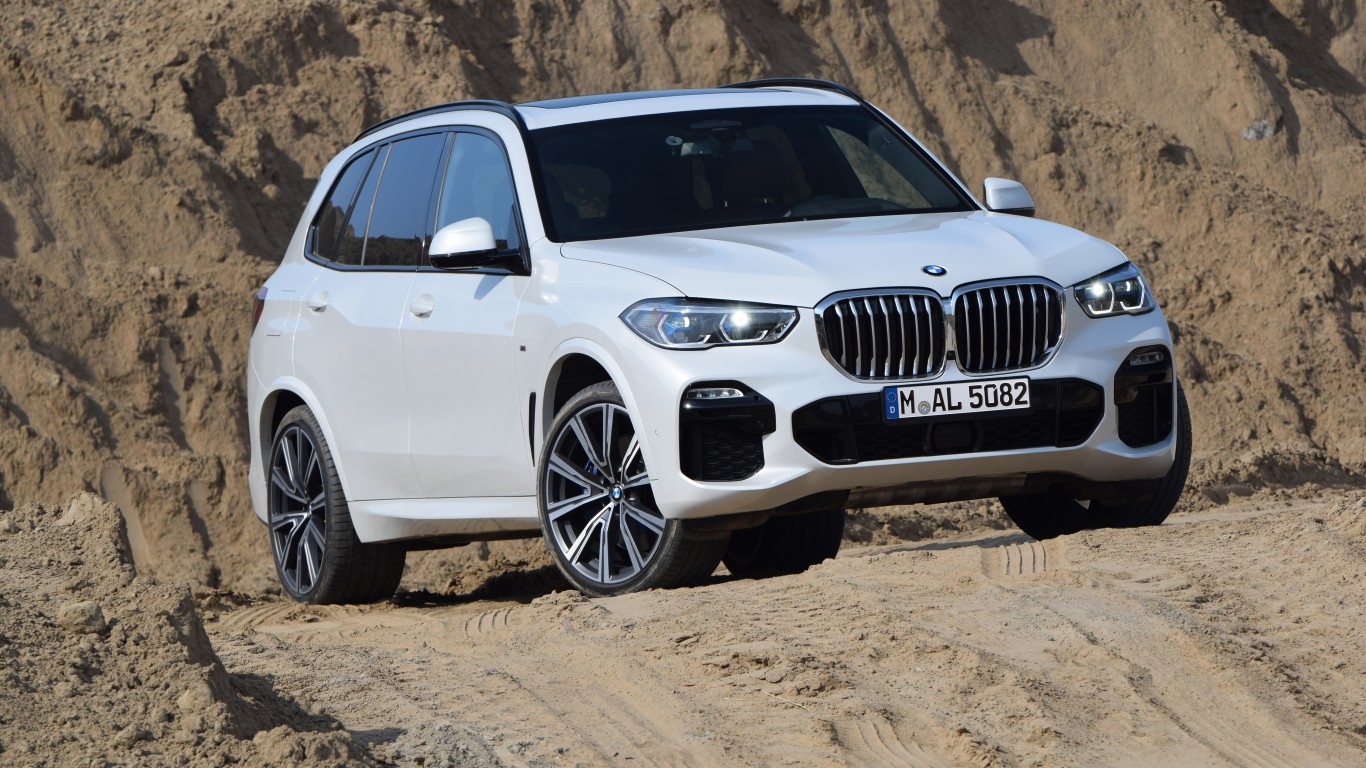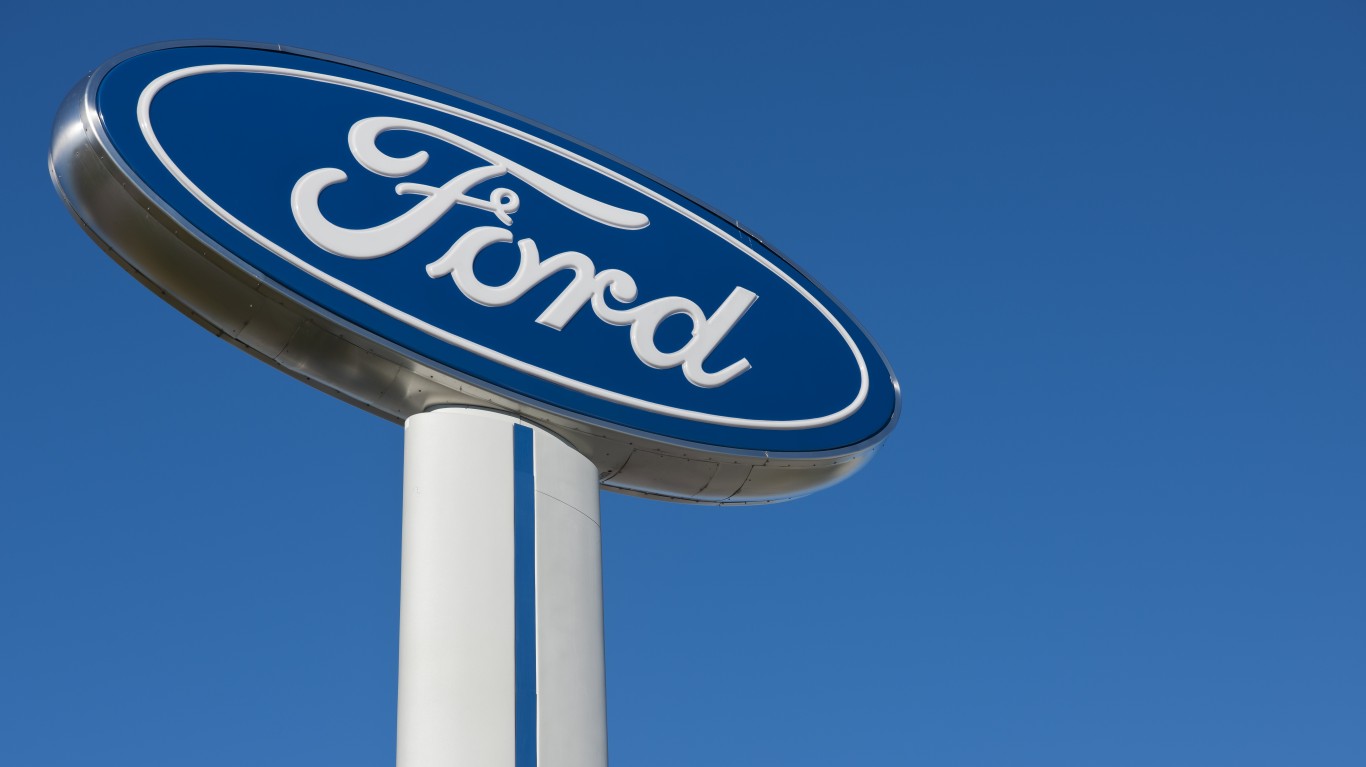
Rivian Automotive Inc. (NASDAQ: RIVN) priced its November 10 initial public offering at $78. The stock opened at $106.75, almost 37% above that price, and closed at around $100.00. On its fourth trading day, the stock reached a high of $179.47 before closing at $172.01. On Friday, the stock closed at $104.67. After about an hour of trading Monday, the stock traded at around $109.10, up about 4.4% from Friday’s close.
Through it all, analysts were looking but not talking. Monday, they began talking. The quiet period following an IPO ended, and more than a dozen brokerages weighed in with ratings and price targets on the stock. By a margin of more than 2 to 1, analysts rated the stock a Buy, and none has rated the shares a Sell. Here’s a look at how several see the company and the stock performing going forward.
[in-text-ad]
Goldman Sachs
Analysts at Goldman Sachs have initiated coverage of Rivian with a Neutral rating and a 12-month price target of $94. Calling Rivian’s R1T pickup an “attractive product” based on its hardware features, software ecosystem and charging capability, Goldman’s analysts nevertheless have some concerns.
First is the company’s ability to ramp up production. That is complicated by current snags in the global supply chain. The analysts also caution that Rivian’s vertical integration model is expensive and projects a cash burn of around $20 billion between the current quarter and the end of 2025.
Goldman bases its price target, the lowest of any announced Monday morning, on its estimated price-to-sales multiple of 11.5 over the next four quarters. The analysts do see unspecified upside over the next 12 to 18 months, if the company can execute its planned production ramp.
JPMorgan
Analysts at JPMorgan have begun coverage of the stock with a Neutral rating and a price target of $104. They were also impressed that Rivian beat Tesla, Ford and GM to market with an all-electric pickup truck. The analysts like the company’s strategic partnerships, its simultaneous focus on both light trucks and commercial vehicles (those 100,000 Amazon delivery vans) and its strong capital base. JPMorgan’s analysts think that Rivian’s solid management team mitigates to some degree the execution risk of ramping production.
Wells Fargo
Analysts at Wells Fargo Securities also started coverage with an Equal Weight (Hold) rating but a higher price target than either Goldman Sachs or JPMorgan: $110. The firm points to a growing order list of more than 55,000 for the company’s yet-to-be-released R1S SUV, as well as market enthusiasm for the pickup.
Wells Fargo also noted the company’s software ecosystem, which it says will enable the company to profit from over its vehicles’ lifetimes. Rivian plans to launch its sport utility vehicle in January and deliver the first 300 of its delivery vans to Amazon before the end of the year. That’s a faster pace of model diversification than even Tesla. The risk, according to the analysts, is that the market is pricing in about 2.2 million vehicles in 10 years, a number on par with established global luxury vehicle makers.
Barclays
Barclays analysts also initiated coverage, with an Equal Weight rating and a price target of $120. The analysts believe that Rivian’s positioning of itself as an “adventurous forever” company differentiates its vehicles in a crowded field of electric vehicles and traditional pickups and SUVs. It’s worked for Jeep for a long time.
[in-text-ad]
Deutsche Bank
Analysts at Deutsche Bank have initiated coverage on Rivian with a Buy rating and a price target of $130. The bank’s analysts especially note a “well-thought-out business plan with unique approaches both to hardware and software.” On the hardware side, the analysts note that the flexible architecture allows for rapid introduction of new models that create economies of scale without requiring a “heroic” market share.
Piper Jaffray
Piper Jaffray analysts started coverage with an Overweight rating and a price target of $148 reflecting upside potential of 40%. The analysts see Rivian’s vertical integration model as a differentiator and a positive, unlike JPMorgan’s more cautious view of the model. Rivian’s plan to develop its own software, chips, batteries, charging networks and direct-to-consumer sales model are within the management team’s capabilities, according to Piper Jaffray.
Baird
Analysts at Baird have begun coverage with an Outperform rating and a $150 price target. The analysts believe that the company has a chance of challenging Tesla’s market dominance with its vertically integrated approach, its strong balance sheet, its partnership with Amazon and its ability to recruit new talent. Much (all?) depends on Rivian’s ability to scale.
RBC Capital
RBC Capital’s analysts have initiated coverage with an Outperform rating and a price target of $165. Calling the company’s R1T pickup a category-defining vehicle, the analysts think the light truck should drive a compound annual growth rate of 50% through the end of the decade. The analysts also appear to agree with Rivian’s estimate of the total available automotive and mobility market of around $9 trillion and with the EV maker’s decision to focus first on the North American market, which RBC thinks “is on the cusp” of an EV inflection point.
Bank of America
Analysts at BofA Securities have initiated coverage of Rivian with a Buy rating and a price target of $170. They believe that Rivian is not only the “most legitimate” of the herd of new EV makers but is also a “relative competitive threat” to legacy automakers, thanks to Rivian’s solid business model.
Take Charge of Your Retirement In Just A Few Minutes (Sponsor)
Retirement planning doesn’t have to feel overwhelming. The key is finding expert guidance—and SmartAsset’s simple quiz makes it easier than ever for you to connect with a vetted financial advisor.
Here’s how it works:
- Answer a Few Simple Questions. Tell us a bit about your goals and preferences—it only takes a few minutes!
- Get Matched with Vetted Advisors Our smart tool matches you with up to three pre-screened, vetted advisors who serve your area and are held to a fiduciary standard to act in your best interests. Click here to begin
- Choose Your Fit Review their profiles, schedule an introductory call (or meet in person), and select the advisor who feel is right for you.
Why wait? Start building the retirement you’ve always dreamed of. Click here to get started today!
Thank you for reading! Have some feedback for us?
Contact the 24/7 Wall St. editorial team.
 24/7 Wall St.
24/7 Wall St. 24/7 Wall St.
24/7 Wall St.



